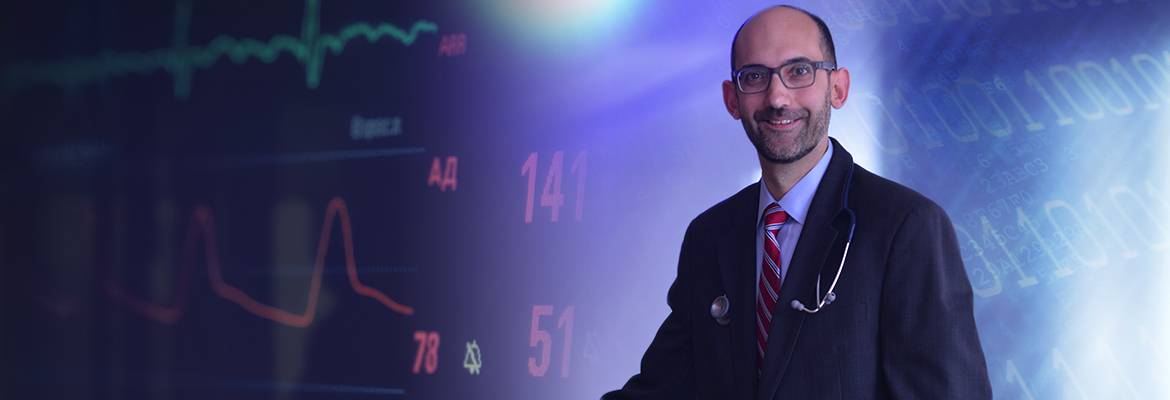Dedication
Steven Douglas, MD, Recognized for Advancing HIV Research

Steven D. Douglas, MD, chief of the Section of Immunology at The Children’s Hospital of Philadelphia, hopes to see an AIDS-free generation in his lifetime. A pioneer in the field, he has established core laboratories at CHOP and the University of Pennsylvania that are vital to human immunodeficiency virus (HIV) research across the lifespan and mentored investigators pursuing clinical and translational science.
In particular, Dr. Douglas has spent his prolific career studying the biology of immune cells, with emphasis on the relevance of monocyte-derived macrophages to potential treatment for human HIV infection. The International Society for NeuroVirology (ISNV) honored Dr. Douglas for his seminal work by presenting him the society’s 2015 Paradigm Builder Lectureship Award.
“Dr. Douglas has been in the forefront of research in immunology where he has been continuously funded for over 40 years,” according to a statement from the ISNV about the award, noting that his work intersects the disciplines of psychiatry, immunology, neurology, and AIDS.
In addition to identifying the mechanisms of HIV infection, Dr. Douglas has led numerous clinical trials focused on pediatric, adolescent, and adult populations living with the disease. He currently serves as a member of the Scientific Oversight Leadership Committee for the International Maternal Pediatric Adolescent AIDS Clinical Trials, belongs to many professional and scientific societies, and holds positions on several national scientific committees. In these leadership roles, he helps to set the agenda for HIV research domestically and globally.
Dr. Douglas has had his finger on the pulse of the AIDS epidemic since it became a crisis in the 1980s. While AIDS now can be managed as a chronic condition, Dr. Douglas stressed that it remains a huge public health issue. He is passionate about the discovery of cutting-edge strategies aimed at HIV prevention, treatment, cure, vaccines, and co-morbidities.
“My major motivation is the challenge to do something good to help people,” said Dr. Douglas, who for the past 35 years has been at CHOP and at the University of Pennsylvania, where he is a professor of Pediatrics in the Perelman School of Medicine at the University of Pennsylvania.
Starting in the late 1970s, Dr. Douglas established laboratory methods for investigating two types of immune cells: monocytes and macrophages. Those cell culture methods have enabled laboratory research throughout the world. Dr. Douglas was among the first scientists to discover that HIV-1 infects macrophages derived from monocytes. He first showed that an important chemical, substance P, exists on these cells, and that it plays a crucial role in neurological manifestations of AIDS. He then identified a pathway shared by substance P and a particular cell receptor as a potential target for treating HIV infection.
Currently, he is collaborating with co-investigators from Temple University in a joint $4.3 million NeuroAIDS grant from the National Institute of Mental Health. This grant funds research on new methods to eradicate HIV that lurks in brain cells despite conventional antiviral treatments.
CHOP scientists are ideally positioned to accomplish such innovative research, Dr. Douglas said, because they have access to valuable repositories of biological specimens, a marvelous support staff and infrastructure at the Research Institute, and a uniquely engaged patient population who receive state-of-the-art medicine provided by expert clinicians.
“It is very important to recognize the commitment of the children and their families,” Dr. Douglas said. “Participating in a clinical trial can be a big commitment, and CHOP is very nurturing and understanding. The care is wonderful here. You’re not a number on a piece of paper.”
Dr. Douglas is the seventh scientist to receive the Paradigm Lectureship Award, established in 2006.
Robert Campbell, MD, Receives Patient Impact Award

A device created by a CHOP expert is changing the lives of children with a debilitating rare disease, offering hope of drastically improved outcomes.
Robert M. Campbell, MD, a professor of Orthopaedic Surgery at the Perelman School of Medicine at the University of Pennsylvania, invented the vertical expandable prosthetic titanium rib (VEPTR), the first device approved by the FDA to treat thoracic insufficiency syndrome (TIS), a rare condition affecting children in which the thorax cannot support regular growth or breathing.
His pioneering work led Pennsylvania Bio to honor him with the Patient Impact Award at the organization’s annual dinner in March.
“I am deeply honored by the Pennsylvania Bio’s Patient Impact Award for our work with the VEPTR device,” Dr. Campbell said. “Our future work will involve integrating quantitative dynamic lung MRI analysis into our treatment strategies.”
Pennsylvania Bio’s Patient Impact Award “recognizes a company or organization that has made a significant contribution to the quality of healthcare or length of life of patients in 2014.” Last year, the University of Pennsylvania and CHOP were jointly given the award for their groundbreaking immune therapy research.
Dr. Campbell led a recent Journal of Pediatric Orthopaedics study that showed VEPTR treatment improved survival to nearly 70 percent, compared to a 20 to 30 percent survival rate without treatment, in patients with Jeune syndrome, a severe form of TIS.
Left untreated, TIS can be devastating. As children with TIS grow, the condition causes the chest to become deformed, and children with TIS are often born with scoliosis, or curvature of the spine. TIS can lead to death due to respiratory insufficiency. However, since Dr. Campbell implanted the first VEPTR in 1989, the device — which as its name implies can be expanded as the child grows — has proven to be a lifesaver.
The founder and Director of CHOP’s Center for Thoracic Insufficiency Syndrome and a highly accomplished pediatric orthopaedic surgeon, Dr. Campbell has been working to improve outcomes for TIS patients for more than 25 years.
Watch a short video highlighting Dr. Campbell and the VEPTR implant.
International Society Gives Award to Thrombosis Expert

Sriram Krishnaswamy, PhD, a CHOP investigator and associate professor of Pediatrics at the University of Pennsylvania, received a Biennial Awards for Contributions to Hemostasis (BACH) Investigator Recognition Award for his work advancing our understanding of coagulation. The International Society on Thrombosis and Haemostasis (ISTH) honored Dr. Krishnaswamy, at its annual meeting in Toronto during the ISTH’s 2015 Congress in June.
The BACH awards are given to investigators who “have made significant contributions to research and education in blood coagulation,” according to the ISTH site. Previous CHOP awardees include Katherine A. High, MD, who is now at Spark Therapeutics.
A thrombosis and hemostasis researcher, Dr. Krishnaswamy investigates the biochemical underpinnings of coagulation. He has led or contributed to numerous papers on the mechanics of coagulation and related topics. Last year he contributed to a Blood study led by Rodney M. Camire, PhD, a CHOP investigator and associate professor of Pediatrics at the University of Pennsylvania, that examined the development of prothrombinase, the enzyme complex responsible for thrombin formation. By shedding light on the location of prothrombinase formation, the study lays the groundwork for future research.
More recently, his lab has been investigating specific blood coagulation factors, aiming to better understanding the factors’ structure and how they contribute to prothrombinase assembly. In one line of research, Dr. Krishnaswamy and colleagues are studying the venom of the eastern brown snake, Pseudonaja textilis. One of the most venomous snakes in the world, the eastern brown snake is found in Australia and New Guinea.
Following previous work published in Blood, Dr. Krishnaswamy and his colleagues — including CHOP’s Shekhar Kumar, PhD, and the University of Cambridge’s James Huntington, PhD — solved the X-ray structure of a protein in the venom of the eastern brown snake, which is very much like the human coagulation factor Va. Despite having similar structures, the mammalian and reptile factors have radically different functions, acting as hemostatic agents and toxins, respectively. Overall, the researchers’ work is leading to a greater understanding of how coagulation factors operate.
Dr. Krishnaswamy’s work is supported, in part, by grants from the National Heart, Lung, and Blood Institute to study the mechanisms of blood coagulation.
Kristy Arbogast, PhD, Takes on New Leadership Role

Kristy Arbogast, PhD, was recently promoted to co-scientific director of the Center for Injury Research Prevention (CIRP) and will continue to serve as this Center of Excellence’s director of engineering.
In her new role, Dr. Arbogast helps lead a group of behavioral scientists, clinicians, engineers, and other professionals who are focused on injury prevention, violence prevention, physical and emotional recovery following injury, and digital health, among other topics.
Dr. Arbogast has been with CIRP since its inception nearly 20 years ago, when she joined Flaura K. Winston, MD, PhD, and Dennis Durbin, MD, MSCE, as a co-investigator on the seminal Partners for Child Passenger Safety project, a 10-year-long national study that led to significant policy and safety design advances for child motor vehicle occupants.
“This is a natural transition for CIRP,” Dr. Winston said. “As Kristy’s career has matured and flourished, so has CIRP. She has helped to grow our Center’s international reputation as a thought leader in child injury prevention and pediatric biomechanics.”
Her work has greatly expanded the quality and quantity of biomechanical and human factors engineering tools that will help industry to engineer better restraint systems to protect child occupants in motor vehicles. More recently, Dr. Arbogast has been studying concussions, not only from motor vehicle crashes, but also from sports. She served on the Institute of Medicine Committee on Sports Concussion in Youth and is a member of the National Council on Youth Sports Safety.
And since 2011, Dr. Arbogast has helped lead a multidisciplinary team from across CHOP called Minds Matter: Improving Pediatric Concussion Management. The program has streamlined and standardized concussion diagnosis, treatment, and follow-up care across the CHOP network, and is now working to develop a concussion registry that can capture critical data from more than 12,000 concussion visits seen at CHOP each year. These data will help guide the field toward developing objective tools for diagnosing concussion and monitoring recovery.
Dr. Arbogast continues to serve as the co-director of the National Science Foundation-sponsored Center for Child Injury Prevention Studies at CHOP, the University of Pennsylvania, and The Ohio State University. Dr. Arbogast is also research associate professor of Pediatrics at the University of Pennsylvania.
“I have benefitted from the interdisciplinary structure of CIRP,” Dr. Arbogast said. “Working with colleagues from diverse academic backgrounds and research interests has expanded my own understanding of child injury prevention. We are all dedicated to translating our research into action to reduce preventable child injuries and deaths.”
Alarm Fatigue Research Grabs Attention and Awards

The constant blips, chirps, and buzzes generated by hospital monitors can warn clinicians of trouble, from dangerous heart rhythms and blocked IV lines to disconnected ventilators and low oxygen levels. The problem is that these alarms are so sensitive that they go off all the time, and most of the time they are false. Research shows that 85 percent to 99 percent of alarms do not require clinical intervention.
This creates a problem akin to the story of the boy who cried wolf. Staff become desensitized to alarms, and they begin responding more slowly when they go off. They even ignore some alarms completely. But on the rare occasion the alarm truly represents a medical emergency, an immediate response is what is needed. The ECRI Institute, an independent nonprofit that researches the best approaches to improving patient care, named clinical alarms the No. 1 health technology hazard for 2014.
“Physiologic monitors and other medical devices have tremendous potential to save lives,” said Christopher Bonafide, MD, MSCE, an attending physician and patient safety researcher at The Children’s Hospital of Philadelphia. “Unfortunately, due in part to their design and in part to how hospitals use them, they generate so many false alarms that clinicians lose trust in them.”
Dr. Bonafide and his research team are focused on studying this problem and coming up with creative solutions to improve medical device alarms and prevent alarm fatigue. They created a video research lab that uses small GoPro cameras temporarily mounted in patients’ rooms, with families’ and nurses’ permission. Every time an alarm goes off, the research team can see simultaneous views of the patient room, a close-up view of the patient, a full view of monitor screens and ventilator displays, and views of the caregivers responding to the alarms. The researchers used delays in caregivers’ response times as a proxy for alarm fatigue.
“No one has actually quantified alarm fatigue in the hospital before,” said Dr. Bonafide, who also is an assistant professor of Pediatrics at the Perelman School of Medicine at the University of Pennsylvania. “We want to evaluate the relationship between the number of false alarms that nurses are exposed to and their response time to critical alarms. In doing this, we hope to learn more about the science behind alarm fatigue and discover new ways to combat it.”
They synchronized the video with monitor data to allow for objective review by experts to determine the validity of alarms and measure response time. The team described the video methods, how they managed the large data files, and how they generated a time-stamped list of alarms that occurred during the video session to use as “bookmarks” during the review process, in an article recognized as best research paper in 2015 by The Association for the Advancement of Medical Instrumentation’s (AAMI) journal Biomedical Instrumentation and Technology.
ECRI Institute also recognized the innovative work being done by the patient safety researchers to measure alarm fatigue by selecting the project as a finalist for its 9th Annual Health Devices Achievement Award. The award recognizes an outstanding initiative undertaken by an ECRI Institute member healthcare institution that improves patient safety, reduces costs, or otherwise facilitates better strategic management of health technology.
The award-winning entries discussed how the study team performed 40 video sessions and then analyzed the data generated by 4,962 alarms. They determined that caregiver response times increased as the number of false, or nonactionable, alarms increased. In the intensive care unit, 87 percent of alarms in heart and lung failure patients were characterized as false. In the general wards, 99 percent of alarms were false.
Dr. Bonafide also received a 2015 Young Investigator Award from the Academic Pediatric Association for his team’s latest project aimed at reducing unnecessary alarms.
“Now that we are convinced that alarm fatigue is real, we need to begin the hard work of reducing alarm fatigue,” said Dr. Bonafide, who received a five-year career development award from the The National Heart, Lung, and Blood Institute to continue his patient safety research. “To do this, we need to work within our own institutions and across institutions to develop and test new interventions to improve the ways we manage alarms. It is also critical that we work with leaders in the medical device industry to actively participate in designing the next generation of monitors with smarter alarms.”
Prestigious Award Goes to Sleep Medicine Investigator

Carole Marcus, MBBCh, has spent most of her career studying the physiology of pediatric obstructive sleep apnea (OSA) and trying to understand the factors leading to airway collapse in sleep.
Her efforts were honored in June, when she received the 2015 William C. Dement Academic Achievement Award at the Annual Meeting of the Associated Professional Sleep Societies. The award recognizes members of the sleep field who have displayed exceptional initiative and progress in the areas of academic research.
During OSA, a child stops breathing, usually attributed to a blockage from enlarged tonsils or adenoids. A brief arousal from sleep increases muscle tone, opens the airway, and allows the child to resume breathing.
Through her research, Dr. Marcus has identified that most children have very active upper airway neuromotor reflexes that allow them to compensate when their airways become narrowed during sleep. Children who experience OSA, however, do not appear to have these reflexes. It remains unclear whether they lost them over time or never developed them in the first place.
Dr. Marcus is excited about a new study, called Steroids for Pediatric Research in Kids (SPARK) that she is leading at CHOP to look at the effects of nasal steroids on treating OSA as an alternative to surgery.
“Sleep is just so fascinating,” Dr. Marcus said. “We’re in an era where we have the gene for so many diseases, and yet we don’t fully understand why people sleep. Sleep remains one of the big enigmas in medicine. So little research has been done in pediatric sleep, and there is so much to find out.”
Nightly episodes of sleep disruptions caused by OSA have been associated with adverse behavioral, cognitive, quality of life, and health outcomes in children. Dr. Marcus was the first author of a large, multicenter study published in the New England Journal of Medicine in 2013 called the Childhood Adenotonsillectomy Study for Children With OSAS (CHAT). Participants who had surgery to remove their adenoids and tonsils had notable improvements in behavior, quality of life, and supportive care, but the researchers did not find any improvements in cognition.
Dr. Marcus continues to find practicing sleep medicine extremely gratifying because she often sees how diagnosing sleep problems and then recommending appropriate therapies can make a huge difference in patients’ and families’ lives. She directs a sleep laboratory at the The Children’s Hospital of Philadelphia main campus and two satellite sites in suburban Philadelphia and New Jersey, with a total of 14 beds.
“I am extremely honored,” said Dr. Marcus, who since 2003 has directed the Sleep Center at CHOP. “Dr. Dement is the father of sleep medicine and someone I really admire. He has taught me to be open to new ideas. A lot of research is not believing what you see and following the path that your research takes, even if it’s an unexpected turn.”
Pediatric Neuropathologist Retires After 50 Years at CHOP

Lucy B. Rorke-Adams, MD, donated samples of Albert Einstein’s brain to the Mutter Museum in Philadelphia in 2012, an event noted by the BBC, in the New Yorker, and in news stories around the world. During her tenure at the city’s famed public Philadelphia General Hospital (PGH) from 1957 to 1977, Dr. Rorke-Adams had received one of five sets of the famed scientist’s brain tissue that were distributed to various pathologists by the medical examiner who autopsied Einstein.
For some people, possessing samples of Einstein’s brain might be a life’s high point. For Dr. Rorke-Adams, it was one episode in a long and varied medical career. A worldwide leader in pediatric neuropathology, Dr. Rorke-Adams, 86, retired June 19 after 50 years at The Children’s Hospital of Philadelphia.
Dr. Rorke-Adams began working at CHOP part-time in 1965, overlapping with her time at PGH. There, she had been the first and only female president of the medical staff in that hospital’s 188-year history. She joined CHOP full-time upon its closure. She went on to become acting chair of Pathology at CHOP, president of the American Association of Neuropathology, a professor at the University of Pennsylvania Perelman School of Medicine, an international expert on pediatric brain tumors and shaken baby syndrome, and an invited speaker at medical schools and professional societies throughout the world. She also served as president of the medical staff at CHOP, and unexpectedly helped run the Hospital for 18 months starting in 1986 during an extended search for a chief executive officer. On top of this, she had longtime associations with the Philadelphia Medical Examiner’s Office, the Wistar Institute, and Wyeth Research Laboratories.
This remarkable professional pedigree marks some of the highest peaks reached in a bold life’s journey that has spanned the scenic terrain of revolutions in medicine, a story relayed by Dr. Rorke-Adams herself in an autobiography in the Journal of Child Neurology.
Dr. Rorke-Adams’ parents, like Einstein, immigrated to America from turmoil in Europe. Her mother survived the Armenian genocide in Turkey in 1915, and in 1921 made her way to Minneapolis, with tickets from an Armenian émigré who would become her husband. The youngest of their five girls, the future Dr. Rorke-Adams, was born Lucy Balian and spoke Armenian before she spoke English.
As commonly happens, contingencies caused detours in her life path. As a teenager, she wanted to be an opera singer — until her out-of-town audition with a Metropolitan Opera mezzo-soprano was cancelled when the professional singer took sick. She started as a clinical psychologist and worked evenings in a psychology clinic while earning her medical degree from the University of Minnesota. She moved to Philadelphia to begin her internship at PGH in 1957. She considered specializing in psychiatry or surgery, but facing the prospect of more sleep deprivation, she chose pathology.
Of her long career in pathology, Dr. Rorke-Adams is proudest of her work on pediatric brain tumors. Based on her expertise, she proposed reclassifications of embryonal pediatric brain tumors in a 1981 presidential address to the American Association of Neuropathologists. This was a direct challenge to a professor in attendance, then a world authority in the field, but in her words, she “threw down the gauntlet.” Subsequent research by other scientists supported her position, and led to improved treatment and outcomes for patients.
In the 1990s, she presented another hypothesis, controversial at the time, on the origin of brain malformations arising in early human development, in so-called migration disorders. Using animal studies and gene analyses, she proposed that disordered genetic control allows neurons to migrate to abnormal, disease-causing locations.
Later studies strengthened that hypothesis. One of Dr. Rorke-Adams’ trainees, Jeffrey Golden, MD, chose to focus on migration disorders, and eventually became CHOP’s pathologist-in-chief, a position held by Dr. Rorke-Adams years before. In addition, before taking a position at Brigham and Women’s Hospital and Harvard Medical School, he became the first holder of a CHOP endowed chair in Pediatric Neuropathology named after Dr. Rorke-Adams.
Despite encountering resistance early in her career from some physicians hostile to women in their profession, and being one of a tiny minority of women in medical school and residency, Dr. Rorke-Adams said, “I never felt any kind of prejudice as a woman.” Or perhaps when it existed, she persisted anyhow.

